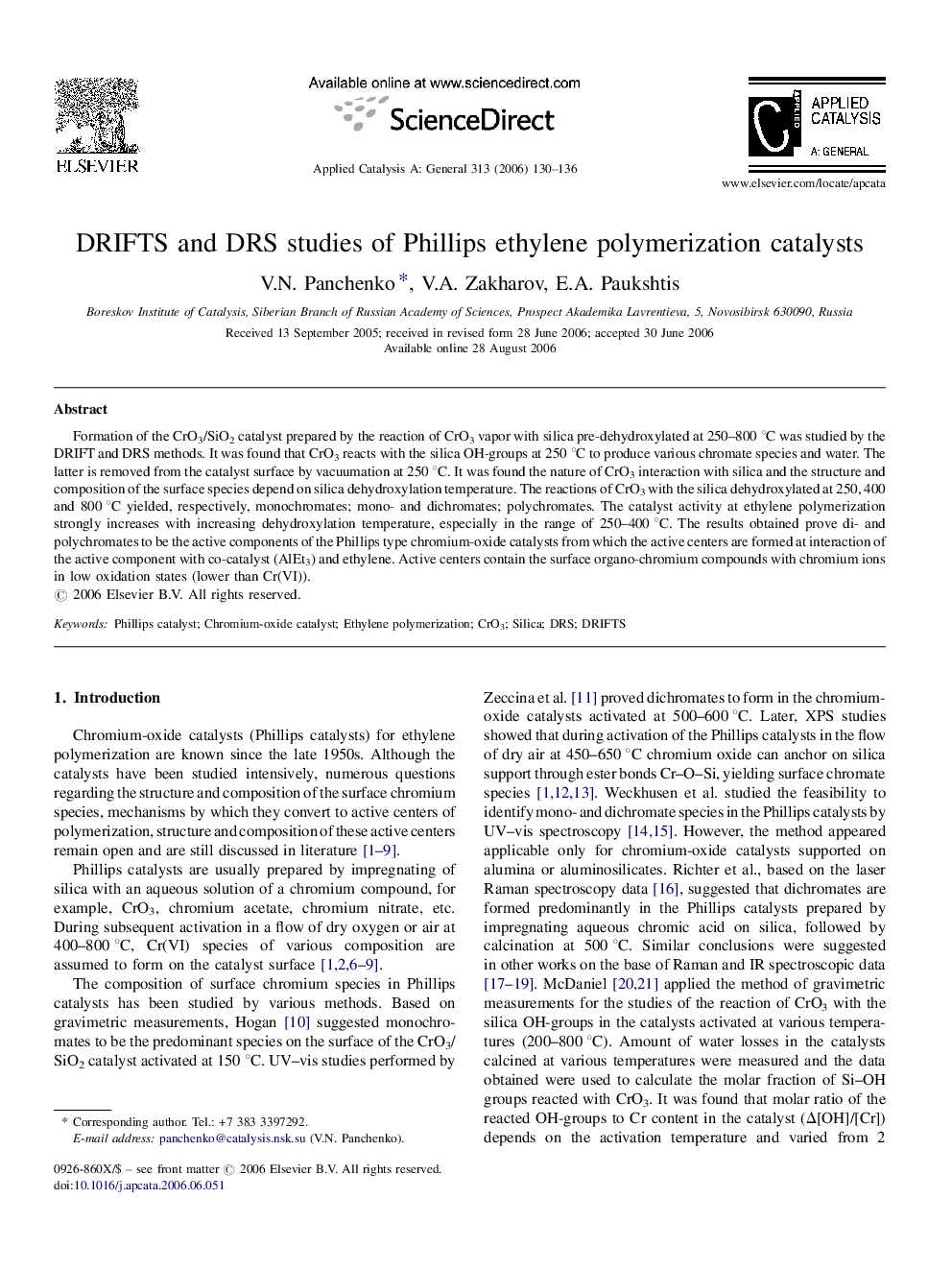| Article ID | Journal | Published Year | Pages | File Type |
|---|---|---|---|---|
| 44574 | Applied Catalysis A: General | 2006 | 7 Pages |
Formation of the CrO3/SiO2 catalyst prepared by the reaction of CrO3 vapor with silica pre-dehydroxylated at 250–800 °C was studied by the DRIFT and DRS methods. It was found that CrO3 reacts with the silica OH-groups at 250 °C to produce various chromate species and water. The latter is removed from the catalyst surface by vacuumation at 250 °C. It was found the nature of CrO3 interaction with silica and the structure and composition of the surface species depend on silica dehydroxylation temperature. The reactions of CrO3 with the silica dehydroxylated at 250, 400 and 800 °C yielded, respectively, monochromates; mono- and dichromates; polychromates. The catalyst activity at ethylene polymerization strongly increases with increasing dehydroxylation temperature, especially in the range of 250–400 °C. The results obtained prove di- and polychromates to be the active components of the Phillips type chromium-oxide catalysts from which the active centers are formed at interaction of the active component with co-catalyst (AlEt3) and ethylene. Active centers contain the surface organo-chromium compounds with chromium ions in low oxidation states (lower than Cr(VI)).
